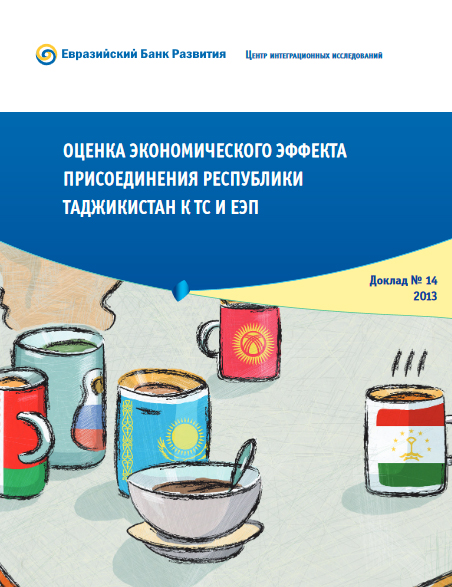Economic Impact of Tajikistan’s Accession to the Customs Union and Single Economic Space

-
Summary
PDF, 2.06 Mb -
Presentation
PDF, 1.33 Mb
The Republic of Tajikistan’s (RT) accession to the Customs Union (CU) and the Single Economic Space (SES) will have a positive economic impact on the country’s economy. However, potential positive gains as a result of accession should not be expected immediately and automatically: accession will merely open a window of opportunity for Tajikistan. The EDB Centre for Integration Studies arrived at this conclusion in its comprehensive report «Economic Impact Tajikistan’s Accession to the Customs Union and Single Economic Space».
A quantitative analysis of the static (one-off) impact of Tajikistan’s accession to the CU indicated that macro-economic indicators would only experience a slight change. During the initial stage of CU accession, Tajikistan would see a moderate positive impact. The benefits would increase, however, should the RT successfully exploit the additional opportunities which would be accessible to the country following the accession. The potential effects of accession consist of three main components: investment, increased productivity and labour migration. These would promote an additional increase in Tajikistan’s potential GDP growth by 3.5% yearly in the medium term. Investment would spur additional economic growth of 1.6% a year, an increase in productivity could bring 0.5%, the integration of new labour resources and reduced unemployment would lead to 0.4% gain, and cash remittances would bring GDP increase at 1%. GDP growth would enable Tajikistan to resolve not only pressing social and economic problems, but would also put the country on the path of sustainable economic growth.
Over the past two decades, investment in Tajikistan’s economy has been siginificantly less than its potential level. The country’s investment capacity currently stands at $ 2.5 billion a year. CU accession would stimulate foreign and domestic investment into the country’s hydro-power sector, mining and light industries, the banking sector, and agriculture.
The studies also examined Tajikistan’s foreign trade potential. Tajikistan’s customs tariffs were sufficiently close to the customs tariffs of the Common Economic Space. That would simplify the pace of adjustment and result only in a minor diversion of trade. The manufacture of new market goods and increased processing needs to be orgainsed in Tajikistan, according to the study, to increase the performance of the country’s export profile.
The researchers maintain that one of the main advantages will be Tajikistan’s accession to the SES single labour market. It will result in a migration increase of 10—15%. Growth estimates for migrant salaries currently stand at 9% to 28%, and the increase in cash remittances at 15 to 25%.
Tajikistan’s accession to the SES will also have a positive impact on recipients of labour migrants. E.g, the Russian budget’s revenue increase through personal income tax alone could equal 40 billions rubles a year.
On the basis of the study, recommendations for a series of measures was compiled, designed to ensure Tajikistan’s smooth and efficient integration into the future Eurasian Economic Union. These recommendations cover foreign trade, investment, state budget support and labour migration regulation.
In addition, stepping up the pace of the negotiations depends on Kyrgyzstan’s accession to the CU, since Tajikistan will then share a common customs border with the CU.
